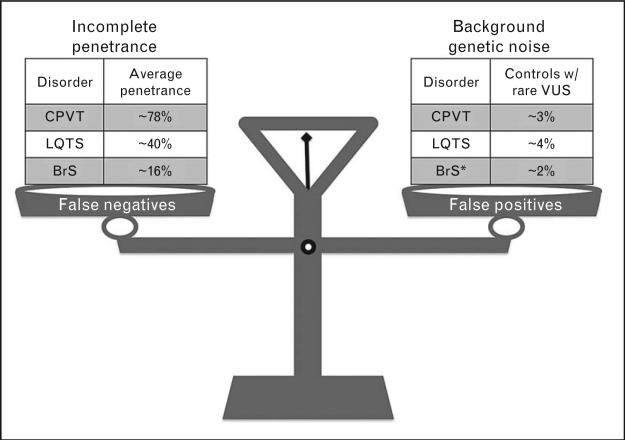FIGURE 1.
The balancing act involved in the interpretation of heritable cardiac arrhythmia syndrome genetic testing results. Careful consideration of potential sources of false positives (e.g., background genetic noise) and false negatives (e.g., prevalence of concealed phenotypes due to incomplete penetrance) along with the patient's entire clinical picture is necessary to effectively interpret reportedly positive long QT syndrome (LQTS), catecholaminergic polymorphic ventricular tachycardia (CPVT), and Brugada syndrome (BrS) genetic testing results. * indicates that the BrS background noise rate of 2% is just with respect to SCN5A-associated BrS1 in whites. The background noise rate would be much higher when considering BrS1-11 in total and in minorities.

